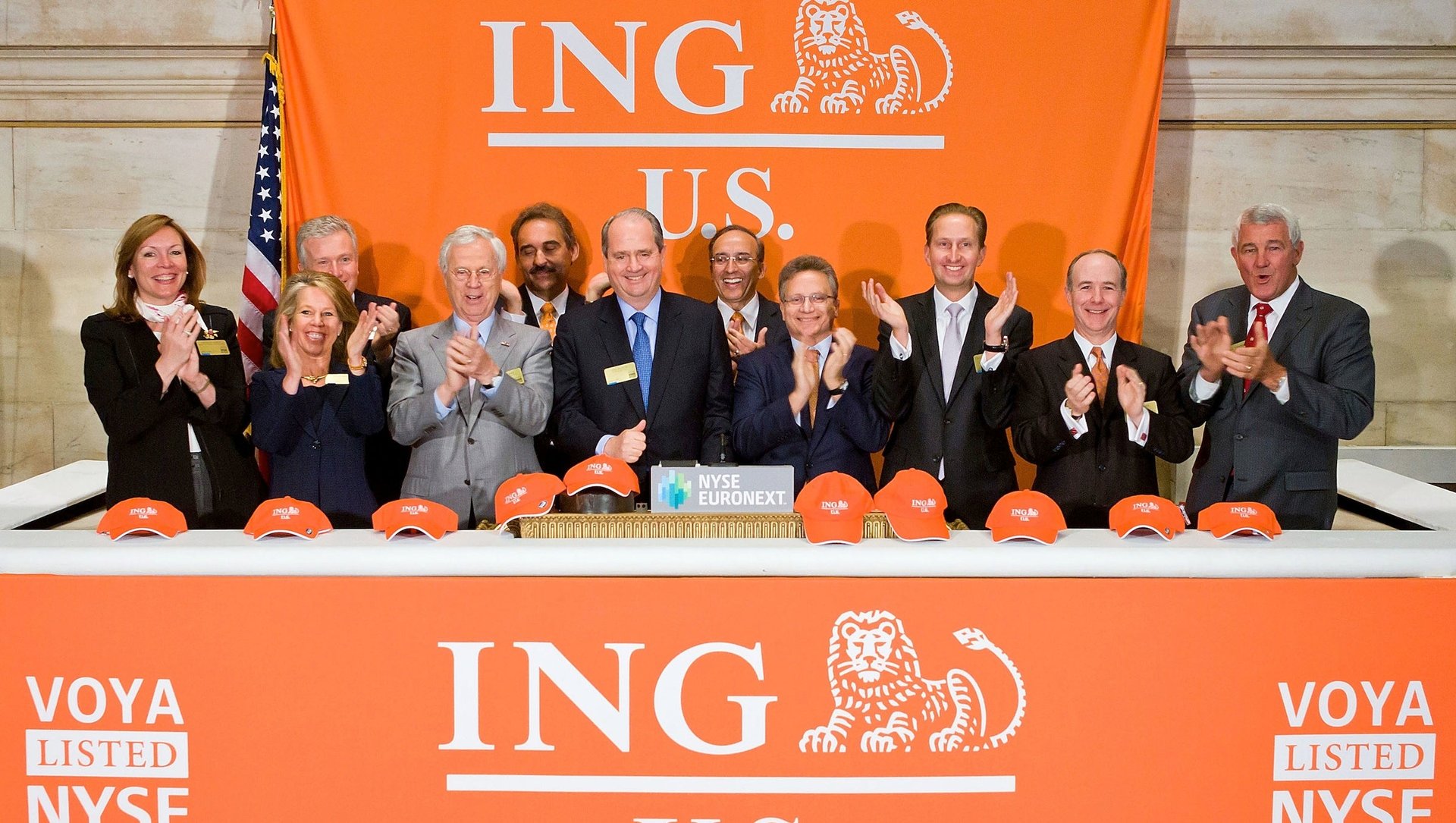Head of ING’s US spin-off defends decision to lower IPO target
When you’re picking a company to manage your investments, the least you’d expect is that it could competently manage its own public offering. So a few eyebrows were raised when the US arm of financial services firm ING Groep lowered the price target of its IPO last week to $19.50, from a previous price range of $21 to $24 a share set in April. But that caution was ultimately rewarded, as ING US shares rose a healthy 8.2% since its debut, avoiding a Facebook-style IPO mishap. It was the second largest IPO in the US so far this year.


When you’re picking a company to manage your investments, the least you’d expect is that it could competently manage its own public offering. So a few eyebrows were raised when the US arm of financial services firm ING Groep lowered the price target of its IPO last week to $19.50, from a previous price range of $21 to $24 a share set in April. But that caution was ultimately rewarded, as ING US shares rose a healthy 8.2% since its debut, avoiding a Facebook-style IPO mishap. It was the second largest IPO in the US so far this year.
ING needed to sell its global insurance and investment management business to repay a €10 billion bailout from the Netherlands during the financial crisis, the result of losses it suffered from its subprime mortgage investments in the US. It’s a familiar scenario for ING US CEO and Chairman Rodney Martin, who was previously head of AIG’s global life insurance business, which were being divested to help AIG repay the US government for its own bailout.
Quartz talked to Martin about the decision to change the IPO price, and what it’s like to pay back government bailout funds.
Quartz: ING ended up pricing the IPO below the share price range, but the stock ended up going up in its debut. What were your thoughts on the pricing and then how the shares did?
Rodney Martin: The price and size of an IPO, especially a transaction of this size, is more art than science. The way the market reacted had the shares at the low end of the range. So the market reacted well and we’re looking forward to our future.
Q: You were at another company that was dealing with the fallout of the financial crisis and then you went to ING, which was facing a similar situation. Where has ING been and where do you see it headed?
RM: At AIG, I went through the AIA IPO, the Alico sale, etc. We did $50 billion worth of transactions in two years. So that’s what attracted me to ING were their ambitions. In my talks with them in 2010, I wanted to know if they were prepared to do what they needed to do. And the answer was yes. They have a terrific franchise and I saw a lot of value to be unlocked under one ING US. About 70% of the business is retirement and investment management, which is the fastest growing market. So the first two years we worked to improve the balance sheet to get ready to separate and list. And now we’re among the largest publicly traded retirement companies. So there is a lot of opportunity in that.
Q:Given the huge number of people that will be retiring among the Baby Boomers but also people needing to work longer to make ends meet, what opportunities does that present for ING?
RM: There are 10,000 people turning 65 every day and most of them are worefully under prepared. There’s a greater worry about whether I am saving enough. As a result, employers are allowing companies like ours to assist more in the education process. I think some companies are not doing as good of a job in communicating to their employees and getting to them early enough in their career. So these employers are recognizing the need for a stronger partnership and we are being brought into the education process.